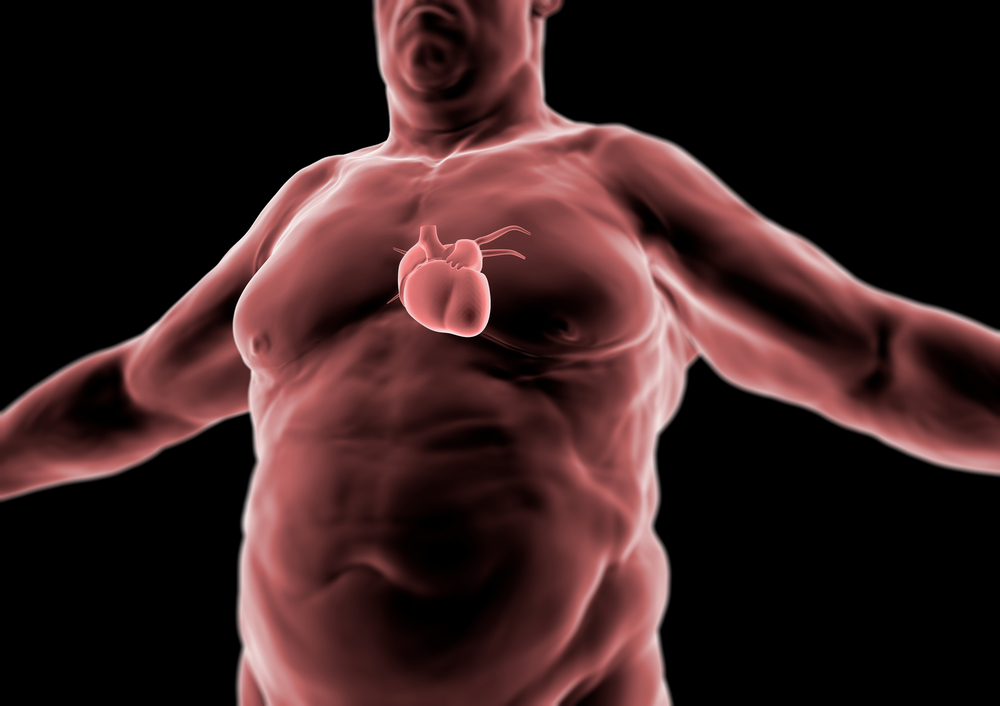High Cortisol Levels, as Seen in Cushing’s, Can Lead to Greater Risk of Heart Disease, Study Finds

People with high cortisol levels have lower muscle mass and higher visceral fat deposits, putting them at a greater risk for cardiovascular disease, new research shows.
High levels of cortisol can result from a variety of reasons, including Cushing’s disease and adrenal tumors. Most adrenal tumors are found to be non-functioning, meaning they do not produce excess hormones. However, up to 47 percent of patients have mild autonomous cortisol excess (MACE).
The study, “Impact of hypercortisolism on skeletal muscle mass and adipose tissue mass in patients with adrenal adenomas,” was published in the journal Clinical Endocrinology.
Long-term studies have shown that as a group, patients with MACE tend to have increased cardiovascular risk factors, such as hypertension, type 2 diabetes mellitus (DM2), obesity, and high lipid levels, which are associated with higher cardiovascular death rates.
Abdominal adiposity, which refers to fat deposits around the abdomen and stomach, and central sarcopenia, referring to loss of skeletal muscle mass, are both known to be linked to higher cardiovascular risk and increased mortality.
Overt hypercortisolism is known to lead to increased visceral adiposity (body fat stored within the abdominal cavity) and muscle loss. However, little is known about the body composition of patients with adrenal adenomas and MACE.
Therefore, researchers set out to determine whether central sarcopenia and adiposity are present in patients with MACE, and whether they can be markers of disease severity in patients with adrenal adenomas. To determine this, researchers used body composition measurements of 25 patients with Cushing’s disease, 48 patients with MACE, and 32 patients with non-functioning adrenal tumors (NFAT) using abdominal CTs.
Specifically, researchers looked at visceral fat, subcutaneous fat, and total abdominal muscle mass. Visceral fat refers to fat around organs, and it is “deeper” than subcutaneous fat, which is closer to the skin.
Results showed that, compared to patients with non-functional tumors, those with Cushing’s disease had a higher visceral to total (V/T) fat ratio but a lower visceral to subcutaneous (V/S) fat ratio. In MACE patients, however, both ratios were decreased compared to patients with non-functional tumors.
Cushing’s disease patients also had 10 cm2 less total muscle mass, compared to patients with non-functional tumors.
An overnight dexamethasone suppression test was conducted in these patients to determine levels of cortisol in the blood. The next morning, cortisol levels were checked. High levels of cortisol indicate the presence of a disease, such as MACE or Cushing’s disease.
After administering the test, researchers determined that for an increase in cortisol in the morning, there was a correlating increase in the V/T ratio and the V/S fat ratio, and a decrease in the mean total muscle mass.
Therefore, the higher the degree of hypercortisolism, the lower the muscle mass and the higher the visceral adiposity.
These results could prove to be clinically useful as both visceral adiposity and low muscle mass are risk factors of a number of diseases, including cardiovascular disease.
“Body composition measurement may provide an additive value in making a diagnosis of clinically important MACE and aid in individualizing management of patients with ACAs and MACE,” the researchers concluded.






